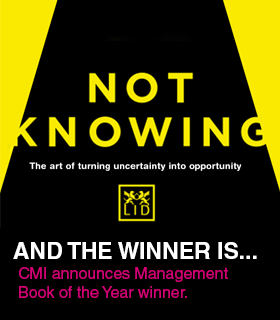Would a more coherent office culture boost employee engagement?

Revitalising traditional work environments is key to driving the UK’s productivity, HR Directors Summit is told – but is it bad management rather than flexible working that spawns disengagement?
Jermaine Haughton
A new report this week suggests that the trend towards a looser office culture in recent years is responsible for staff feeling separate from each other, disconnected from their firms and, ultimately, disengaged. The report – produced by workplace solutions provider Steelcase, and unveiled at the HR Directors Summit in Birmingham – has arrived at a time when businesses are striving to consolidate their positions in the economic recovery, with the cost of disengagement, in terms of overall momentum and progress, a burden that bosses can ill afford.
According to the study, 83% of UK employees report that they are not engaged – or feel actively disengaged – at work. The remaining 17% who are more upbeat about the connections they feel with their firms – compares poorly to the 30% of US workers who report a similar sentiment. Steelcase director of design alliances Catherine Gall told the Summit that the poor level of engagement should be a serious cause for concern among organisations.
“The impact of employee engagement – or the lack of it – cannot be underestimated,” she said. “It is a global issue and is affecting a wide range of companies, including leading organisations with teams of employees distributed around the world.”
She added: “The business benefits of fully engaged employees are clear. Those businesses outperform competition, enjoy higher productivity and profitability, and have lower staff turnover, absenteeism and safety incidents.”
In particular, she pointed out, “companies such as Jones Lang La Salle and Yahoo have articulated how important it is to get teams of employees collaborating effectively – and that is best done in an inspiring workplace.”
In 2013, Yahoo chief Marissa Mayer made the headlines for banning employees from working at home – a step she said was vital for ensuring increased productivity and a more connected company culture.
A leaked Yahoo memo read: “To become the absolute best place to work, communication and collaboration will be important, so we need to be working side-by-side. That is why it is critical that we are all present in our offices. Some of the best decisions and insights come from hallway and cafeteria discussions, meeting new people, and impromptu team meetings. Speed and quality are often sacrificed when we work from home. We need to be one Yahoo, and that starts with physically being together.”
Gall explained that creating a welcoming and thriving physical and mental environment for staff is the key for employers seeking to re-establish high engagement levels. “We strongly believe in the power of place,” she said, “and that bringing people together in a space will make them more collaborative and innovative. Therefore, workplaces need to be destinations that enhance the physical, cognitive and emotional wellbeing of workers.”
Managers, Gall stressed, should focus on a handful of simple values to re-engage their staff. “People, purpose and place,” she said, “are the three key elements to encourage and activate greater employee engagement. The tools and the technologies are there to help that happen and are developing all the time. The utilisation of those tools, the creation of innovative space and a commitment to accommodate the wellbeing of employees can go a long way to creating a dynamic and productive space that will deliver tangible benefits to a company.”
However, with flexible working still a popular means of promoting engagement by improving staffers’ work-life balance, many would argue that it’s unfair to pin the blame for fading enthusiasm on flexible working. CMI head of external affairs Patrick Woodman told Insights: “Bad management is the main reason employees disengage, not flexible working, and we shouldn’t turn a blind eye to that fact. But it doesn’t have to be an either/or scenario. Good managers can reap the benefits of flexible working and preserve a sense of team spirit.”
He added: “Of course, any organisation trying to put flexible working in place has to make sure its managers have the right skills, or it will fall down. Like any change-management programme, it’s about the people. Whether it’s through short courses, management qualifications or coaching and mentoring, employers need to ensure managers across the business have the skills to make the most of new ways of working.”

Press & Media Enquiries
For more information or to request interviews, contact CMI's Press Team on 020 7421 2705 or email press.office@managers.org.uk



